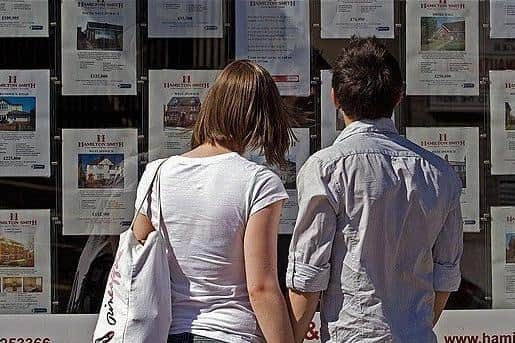Re-purposing and retrofitting existing housing stock should be a key Government priority - Martese Carton
As things currently stand, the housing market does not function effectively – according to the latest census data published last week, around 70 per cent of all owned homes are now under-occupied.
Empty nesters are disincentivised from down-sizing, while stamp duty is a major barrier for families wishing to move up the housing ladder. The net result is a lack of typical first-time buyer homes available to buy.
Advertisement
Hide AdAdvertisement
Hide AdProviding people with good housing really matters. The link between housing and outcomes in health and wellbeing are long established and backed up by medical evidence that shows that quality and tenure have a significant impact. Homeowners are less likely to live in overcrowded or damp conditions, they move home less often and are more likely to feel they belong in their community. This is good for children growing up as it leads to better outcomes in health, education, and social mobility.


The maddening thing is that whilst the speed of building new properties continues to fall, the UK is not utilising its existing housing stock. The number of homes across England which are standing empty – currently around 670,000 – shows no real signs of reducing. In Yorkshire/Humber alone there are over 48,000 empty properties, of which around 27,500 have been empty for over six months.
But rather than getting more of these properties back into circulation, research by national campaigning charity, Action on Empty Homes, showed that in 2022 the number of long-term empty homes in England (those properties which have been empty for over six months) continued to rise and totals 248,633 – well above the 2016 low point of 200,145 properties.
So, what can be done to improve our existing housing stock?
Re-purposing and retrofitting our existing housing stock should be a key government priority. Empty homes come in all shapes and sizes. They include derelict homes as well as homes that just need some slight renovation. But they also include new build flats which have been purposely left untenanted. Some of these empty homes are in a very bad state of repair, but many of them are in a reasonable condition.
Advertisement
Hide AdAdvertisement
Hide AdSome basic upgrades are, in a lot of cases, all that are required to get the house back into use. Recent estimates show that the average empty home only needs around £20,000 spending on it to make it habitable once again.
There is a growing sense that these empty properties should provide some of the solutions to the housing shortage, providing affordable homes for first time buyers and others – particularly as it’s far kinder to the environment to refurbish and repurpose old property.
In February, Action on Empty Homes will be holding its annual National Empty Homes Week. They are calling for a new national strategy on empty homes along with the creation of a national fund to support councils in bringing tens of thousands of long-term empty homes back into use through a locally focused programme of grants and loans.
Martese Carton is director of mortgage distribution at Leeds Building Society.